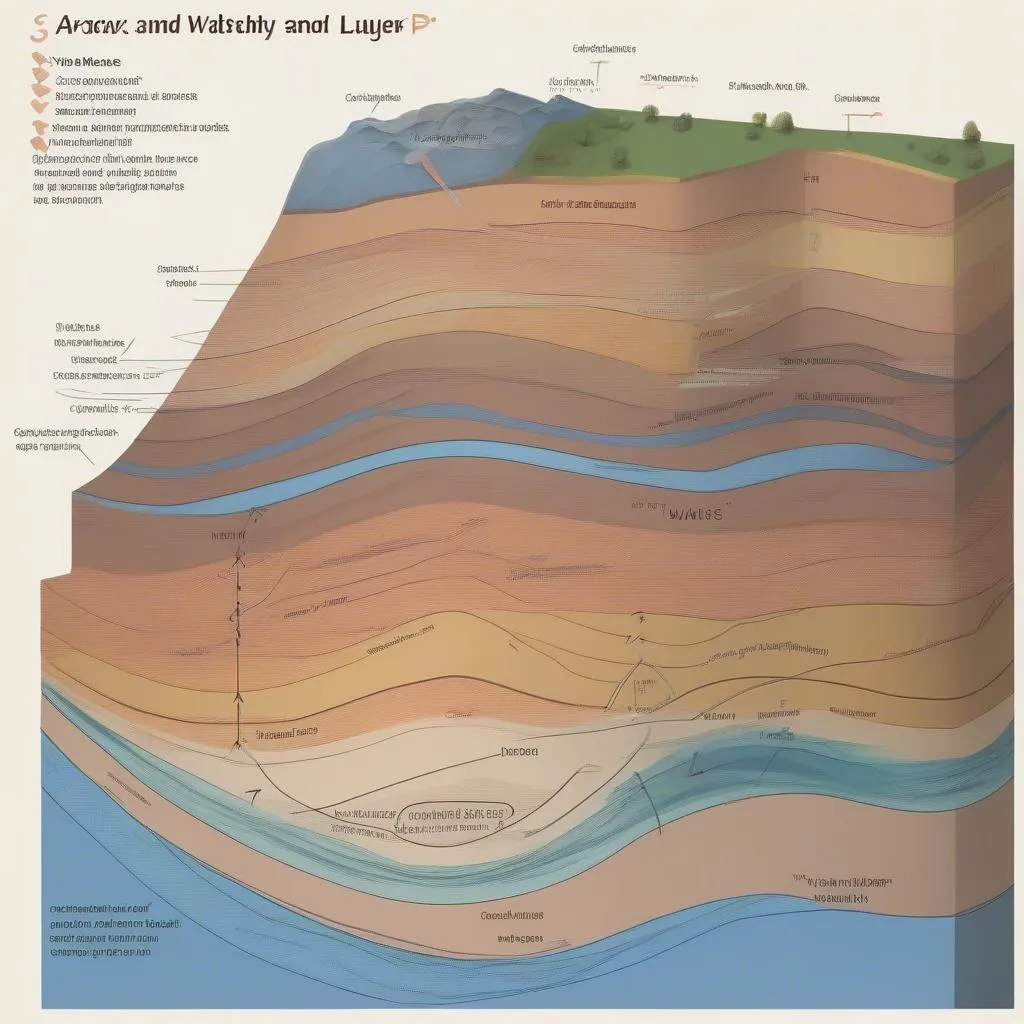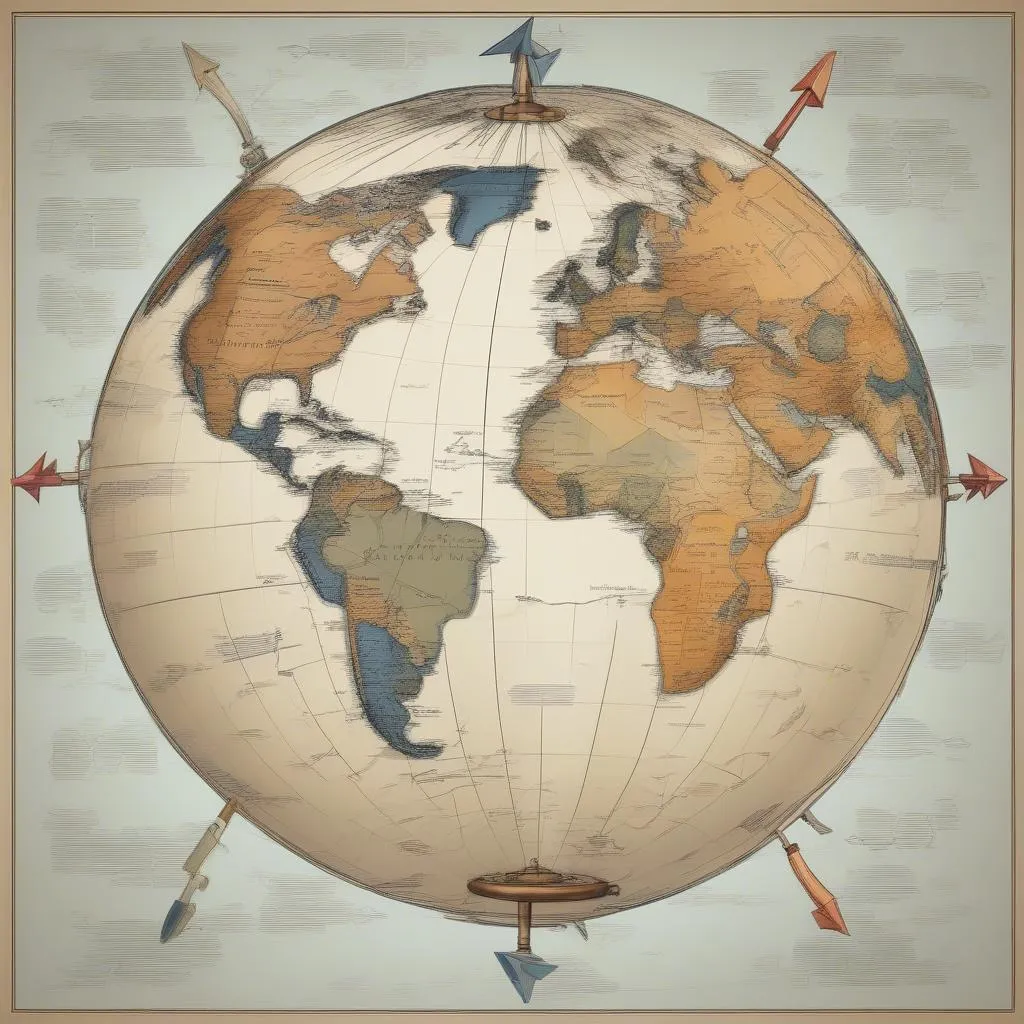Have you ever wondered how we know so much about the Earth’s interior? It’s not like we can just dig down to the core! We rely on seismic waves, the vibrations produced by earthquakes, to act as messengers from deep within our planet.
One type, secondary waves (also known as S-waves or shear waves), play a crucial role in this exploration. But there’s a catch – S-waves are picky travelers. Let’s unravel the mystery of what these waves can and cannot travel through.
Unpacking Secondary Waves: The Shake, Rattle, and No Roll
Imagine standing on a rug and giving it a quick shake from side to side. You’ll notice a ripple effect traveling across the rug – that’s similar to how S-waves move. They cause the particles within the Earth to vibrate perpendicular to the direction the wave is traveling. This is different from primary waves (P-waves), which cause a push-and-pull motion, like a slinky.
This unique movement is key to understanding why S-waves behave differently in different materials.
The Solids Only Policy of S-waves
Here’s the big reveal: S-waves can only travel through solids. Why? Because solids have a property called rigidity, which means they resist changes to their shape. This resistance allows them to transmit the side-to-side motion of S-waves.
Think of trying to send a wave through a swimming pool by moving your hand sideways – the water just sloshes around. Liquids and gases lack rigidity and simply don’t have what it takes to propagate S-waves.
This critical fact has huge implications for our understanding of the Earth’s interior.
Earth’s Layers: A Tale of Two Waves
By analyzing the paths and speeds of both P-waves and S-waves recorded at seismograph stations around the world, scientists have been able to piece together a picture of the Earth’s layered structure.
- Crust: Both P-waves and S-waves travel through the Earth’s outermost layer, confirming it’s solid rock.
- Mantle: Again, both wave types pass through, indicating a solid (though not completely rigid) layer.
- Outer Core: Here’s where things get interesting. S-waves disappear! This crucial observation led scientists to the groundbreaking conclusion that the outer core is liquid. You can read more about how different seismic waves travel through various mediums on our website. [link to https://travelcar.edu.vn/what-medium-do-seismic-waves-travel-through/ with text “here”]
- Inner Core: Hold on, it gets even more complex. While S-waves can’t penetrate the liquid outer core, they reappear (albeit faintly) in the inner core. This suggests that the intense pressure at the Earth’s center causes the iron-nickel alloy to behave like a solid, allowing for the transmission of S-waves.
 Earth Layers Diagram
Earth Layers Diagram
FAQs: Your Burning S-wave Questions Answered
- Can S-waves travel through liquids? No, S-waves can only travel through solids due to their need for a rigid medium.
- Which seismic wave travels the fastest? P-waves are speed demons, always arriving at seismographs before S-waves. Learn more about the speed of seismic waves on our website. [link to https://travelcar.edu.vn/which-seismic-wave-travels-the-fastest/ with text “Learn more about the speed of seismic waves on our website.”]
- Why are S-waves important? They provide crucial evidence for the existence of Earth’s liquid outer core and help us understand the composition and properties of our planet’s interior.
Traveling Deeper: Exploring Our World
Just as S-waves reveal the hidden layers of our planet, exploring new destinations allows us to uncover hidden layers within ourselves and connect with the world in profound ways. Whether you’re drawn to the bustling streets of Tokyo or the tranquil beaches of Bali, travel offers endless opportunities for discovery and growth.
For travel tips, destination guides, and inspiration for your next adventure, be sure to visit TRAVELCAR.edu.vn, your trusted source for all things travel.
 Globe Travel
Globe Travel
